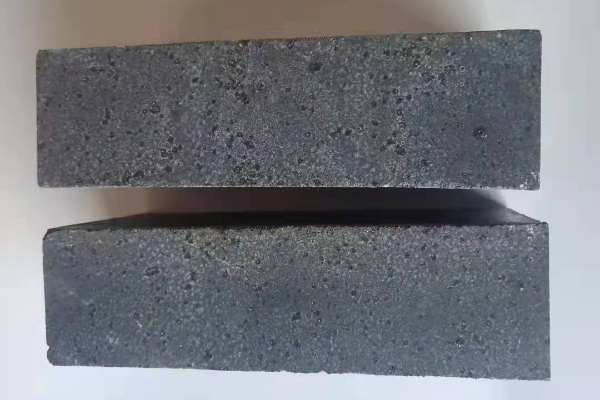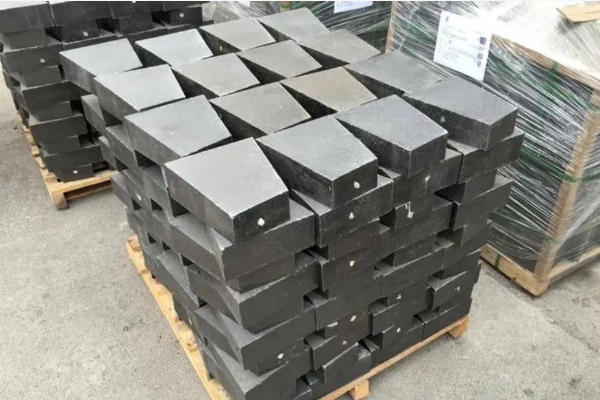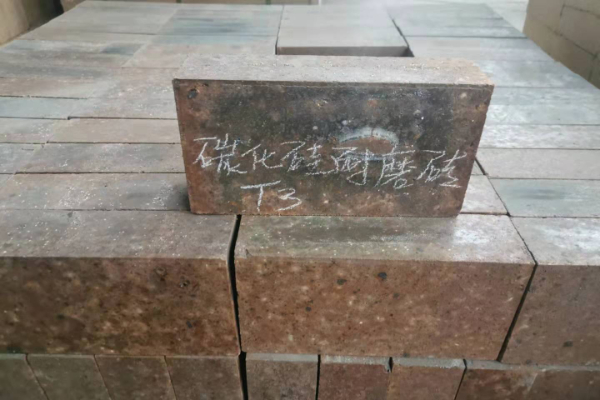Знакомство с огнеупорным кирпичом из карбида кремния
Карбидокремниевые огнеупорные кирпичи изготавливаются из карбида кремния в качестве основного сырья.. SiC связан ковалентно и не обладает так называемой спекаемостью.. Вместо, он основан на химических реакциях для создания новых фаз для достижения спекания., то есть, реакционное спекание.
По разным методам склеивания, кирпичи из карбида кремния подразделяются на карбидокремниевые кирпичи на глиняной связке, кирпичи из карбида кремния на связке, Кирпичи из карбида кремния на связке оксинитрида кремния, Кирпичи из карбида кремния на связке нитрида кремния, Карбидокремниевые кирпичи на сиалоновой связке, и рекристаллизованные карбидокремниевые кирпичи.

Различные способы комбинирования карбидокремниевого огнеупорного кирпича
Огнеупорные кирпичи из карбида кремния на глиняной связке
Кирпичи из карбида кремния на глиняной связке изготавливаются из черного карбида кремния в качестве сырья., мягкая глина с хорошими связующими свойствами, и жидкие отходы целлюлозы в качестве связующего вещества. В целом, это сочетается с 10% к 15% из глины и 3% к 5% жидких отходов целлюлозы. Максимальная объемная плотность используется для расчета состава крупных, середина, и мелкие частицы карбида кремния.

Карбидокремниевые кирпичи на связке нитрида кремния
Кирпичи из карбида кремния на связке нитрида кремния изготавливаются из карбида кремния и кремниевого порошка в качестве сырья и представляют собой продукты азотирования и обжига..
Сырье карбида кремния содержит более 97% Карбид кремния, а соотношение частиц карбида кремния в буровом материале составляет: грубый: середина: хорошо = 5:1:4. Кремнеземный порошок содержит более 98%, больше, чем 80% меньше, чем 10 мкм, и самая крупная частица не может превышать 20 мкм.
Карбид кремния на связке β-SiC
Кирпичи из карбида кремния на связке β-SiC состоят из карбида кремния., кремниевый порошок, и угольный порошок в определенной пропорции, смешанный, сформированный, и обожжен в восстановительной атмосфере при температуре 1400°С.. Большинство из них сжигаются с использованием захороненного углерода.. В процессе стрельбы, Кирпич из карбида кремния на связке β-SiC производится с использованием α-SiC в качестве каркаса и мелкозернистого β-SiC в качестве матрицы.. β-SiC образуется в результате реакции между порошком кремния и порошком углерода в процессе обжига.. Этот продукт обычно содержит небольшое количество остаточного кремния и углерода..
Карбидокремниевые кирпичи на связке оксинитрида кремния

Для карбидокремниевых кирпичей на связке оксинитрида кремния., кремниевого порошка в составе меньше, чем у кирпича на связке Si3N4. После формования, его сжигают в атмосфере, богатой N2 (требующее определенного парциального давления O2) при температуре 1350 до 1400°С. Готовый продукт представляет собой карбидокремниевый кирпич на связке оксинитрида кремния с α-SiC в качестве каркаса и Si2ON2 в качестве матрицы.. В матрице часто присутствуют небольшие количества Si и Si3 N4..
Карбидокремниевые кирпичи на сиалоновой связке
Кирпичи из карбида кремния на сиалонной связке изготавливаются путем смешивания порошка Si3N4 и Al203 с карбидом кремния в соответствии с определенным соотношением размеров частиц., добавление связующего в смесь, а затем обжиг в восстановительной атмосфере после формования. Выпускаются огнеупорные изделия с α-SiC в качестве каркаса и сиалоном в качестве матрицы.. Поскольку матрица Сиалона существует между частицами, повышается прочность изделия и повышается устойчивость к термическому удару.
Изделия из рекристаллизованного карбида кремния
Рекристаллизованные изделия из карбида кремния состоят из 100% α-SiC и не имеют второй фазы.
В сырье содержится более 99.5% Карбид кремния. Он принимает градацию частиц с максимальной плотностью упаковки., и литье под высоким давлением, и обжигается в электрической печи, изолированной от воздуха.. Температура выше 2100°C.. Электропечь необходимо обжечь до 2500°С.. SiC испаряется и конденсируется, в результате получается безусадочная самосвязывающая структура.
 Завод огнеупоров Ронгшэн
Завод огнеупоров Ронгшэн
WeChat
Отсканируйте QR-код с помощью wechat